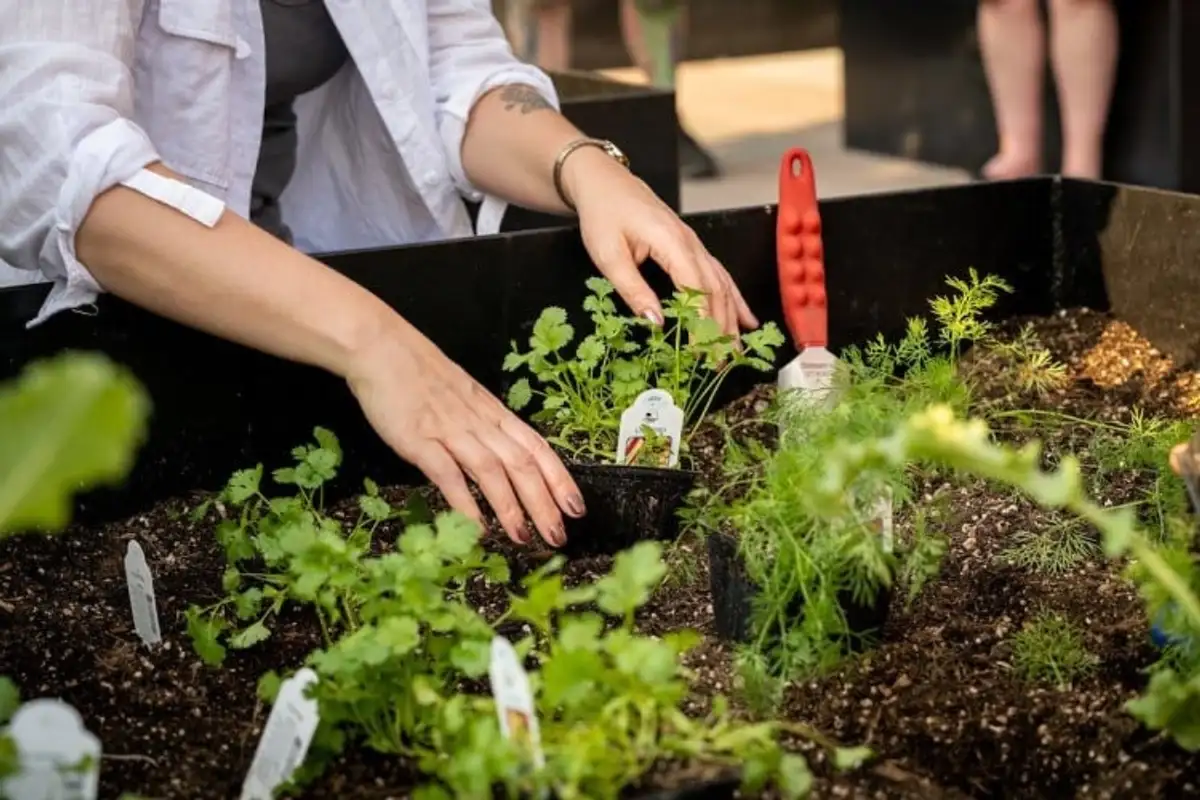Are you a fan of parsley? If so, you've probably already planted it in your garden this spring! But can parsley be planted in September? When is the best time to do so? If you're looking for gardening tips to ensure a bountiful harvest of beautiful parsley, you're in luck! This article will provide all the information you need.
When is the best time to sow parsley?
Parsley is a herb packed with vitamins C, A, and iron. Its delicate flavor adds a touch of freshness to our dishes, salads, and sauces. This self-seeding plant can even thrive in cold weather.
While parsley can be grown indoors at any time of the year, the best time to start cultivation is in March or April, and in September for a second harvest in the spring. If you're planting in the garden, sow parsley in open ground 3 to 4 weeks before the last spring frost. The ideal soil temperature should be around 21 degrees Celsius. If you're planting indoors, you can start the seeds in individual pots 6 to 8 weeks before the last spring frost and then transplant them into the garden.
Can parsley be sown in September 2023?
Sowing parsley in September is a common practice because it is a perennial plant that blooms in May and June. In fact, parsley planted in autumn often yields a more abundant harvest compared to spring planting. So, the answer to the question “Can parsley be sown in September?” is a resounding “Yes!”
Parsley thrives in cold climates and can withstand temperatures as low as -4 degrees Celsius during winter when planted in the autumn. The seeds contain oils that slow down germination by impeding the necessary moisture. However, when the seeds are sown in September, the melting snow provides ample moisture that washes away these oils and promotes germination in the spring.
How to sow parsley in open ground?
If you're looking for tips on sowing parsley in open ground, here's what professional gardeners recommend:
1. Choose a spot in your vegetable garden that receives four to eight hours of direct sunlight, either full sun or partial shade.
2. Prepare the planting beds by adding organic matter to nourish the soil. Continual fertilization will also stimulate your harvest.
3. Plant the seeds by covering them with a layer of soil approximately 1.5 cm thick. Water the seeds well to keep the soil adequately moist. Watering the parsley once or twice a week is ideal.
4. Cover the soil around the seedlings with mulch, such as dry leaves or wood chips. This helps retain optimal moisture and prevents weed growth. Remember, parsley takes time to grow, so be patient!
How to sow parsley in pots?
If you prefer to plant parsley in pots, even alongside other flowers or herbs that grow in September, here's a step-by-step guide:
1. Choose a 4-liter pot for a single parsley plant or a planter for multiple plants. Ensure the pots have proper drainage holes and add slow-release fertilizer to the moist soil.
2. Water the parsley frequently, as it cannot tolerate drought.
How to maintain parsley?
Maintaining parsley is fairly simple and straightforward. In winter, you can cover the plants to protect them from extreme temperature drops. Once the snow has melted, resume watering the parsley several times a week, especially when it doesn't rain. This is a crucial step for the plant's growth and flavor development. Watering the soil in the evening is recommended, with the preferred moisture level reaching 70%. Remember to always water at the base of the parsley and avoid watering the green leaves.
It's also recommended to thin out the parsley by removing weak stems. This should be done immediately after the emergence of green leaves and again when the floral stems appear. Fertilizers such as flour earth, compost tea, and chicken manure are beneficial for parsley growth.
By following these tips, you'll be able to successfully sow and maintain parsley in your garden or pots. Enjoy the bountiful harvests of this versatile and flavorful herb!
Hello, I'm Olivia, a proud member of The Daily Herald team. As a passionate writer, I enjoy sharing captivating stories that bring a touch of elegance to our readers' lives. In fact, one time while working on an article about fashion trends, I stumbled upon a hidden gem boutique that ended up becoming a favorite among our loyal followers. It's moments like these that make my job truly rewarding and inspire me to keep uncovering the best lifestyle secrets for our readers.

